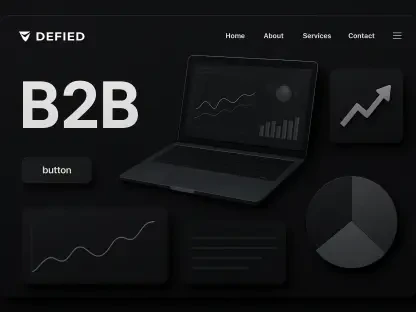In today’s fast-paced digital landscape, businesses face the daunting challenge of meeting customer expectations for instant, personalized interactions across multiple channels, with studies showing that over 70% of consumers demand real-time responses. This growing demand has propelled chatbot technology to the forefront of customer engagement strategies, offering automated solutions that save time and enhance user experiences. Among the myriad platforms available, SendPulse and Chatfuel stand out as prominent tools designed to streamline communication and marketing efforts. This comparison delves into the core functionalities, strengths, and limitations of these two platforms, providing a clear perspective on how they cater to diverse business needs. By exploring their capabilities side by side, the aim is to guide companies in selecting the right tool to elevate their customer engagement game.
Overview of SendPulse and Chatfuel in Chatbot Technology
SendPulse and Chatfuel have carved out significant spaces in the chatbot industry, each offering unique approaches to enhancing business communication in a digital-first world. SendPulse positions itself as an all-in-one marketing and communication platform, integrating chatbots with email campaigns, SMS messaging, and CRM functionalities to create a cohesive system for businesses. Its versatility allows companies to manage customer interactions across a broad spectrum of channels, making it a comprehensive solution for those seeking centralized operations.
Chatfuel, on the other hand, focuses more narrowly on social media marketing through chatbots, emphasizing platforms like Facebook Messenger and Instagram to drive engagement and lead generation. This targeted approach appeals to businesses prioritizing social media presence, offering tools tailored to broadcasting and capturing customer interest within these ecosystems. Both platforms address the modern necessity for quick, personalized customer interactions, but their differing scopes highlight varied paths to achieving this goal.
The relevance of SendPulse and Chatfuel lies in their ability to meet the urgent need for seamless engagement as customers increasingly expect brands to be accessible anytime, anywhere. While SendPulse caters to organizations looking for a broad, integrated marketing solution, Chatfuel serves those with a laser focus on social media impact. This distinction sets the stage for a detailed examination of how each platform performs across critical dimensions, helping businesses align their choice with strategic priorities.
Feature-by-Feature Breakdown of Core Capabilities
Multichannel Support and Communication Reach
A critical aspect of any chatbot platform is the range of channels it supports, as customers interact with brands across diverse touchpoints. SendPulse excels in this area with extensive coverage, including WhatsApp, Instagram, Facebook Messenger, Telegram, SMS, email, and website widgets. This wide array enables businesses to maintain a unified inbox, streamlining omnichannel engagement and ensuring no customer query goes unanswered, regardless of the platform used.
Chatfuel, by contrast, focuses primarily on social media channels such as Facebook Messenger, Instagram, WhatsApp, Telegram, and website widgets, aligning with its strength in social media marketing. While effective for businesses centered on these platforms, its narrower scope may limit reach for those needing broader communication tools like email or SMS. The difference in channel diversity directly impacts how accessible a business appears to its audience, with SendPulse offering a more inclusive approach.
The implications of this disparity are significant for customer experience. A unified presence across multiple channels, as facilitated by SendPulse, can enhance consistency and satisfaction, while Chatfuel’s specialization ensures deeper engagement on social platforms where audiences are highly active. Businesses must weigh whether a comprehensive reach or a targeted social focus better suits their operational model and customer base.
Marketing Automation and Lead Generation Tools
Beyond basic communication, the ability to automate marketing tasks and generate leads is a cornerstone of modern chatbot platforms. SendPulse shines with its integration of chatbots into a wider marketing ecosystem, incorporating email campaigns, SMS reminders, and push notifications to nurture leads and drive conversions. This holistic setup is ideal for e-commerce businesses running promotions or sending personalized offers across multiple touchpoints.
Chatfuel, while less expansive, concentrates on social media broadcasting and lead capture, providing tools to automate messages and collect user data directly from platforms like Instagram or Messenger. Its strength lies in crafting campaigns tailored to social audiences, such as targeted ads or quick-response funnels for small businesses. However, it lacks the depth of automation features seen in SendPulse for broader marketing strategies.
The practical applications of these capabilities reveal their distinct advantages. For instance, an online retailer using SendPulse can automate a cart abandonment email alongside a WhatsApp reminder, while a boutique leveraging Chatfuel might excel in driving Instagram followers to a flash sale via automated messages. Each platform empowers proactive engagement, but the choice hinges on whether a business seeks an all-encompassing marketing toolkit or a social media-specific solution.
Ease of Use, Analytics, and Customization
Navigating the technical aspects of chatbot platforms is crucial for businesses, especially those without dedicated IT teams. Both SendPulse and Chatfuel offer user-friendly, no-code drag-and-drop builders, making bot creation accessible to non-technical users. However, SendPulse introduces slightly more complexity with its advanced features tied to broader marketing integrations, which might require a steeper learning curve for full utilization.
In terms of analytics, SendPulse provides detailed metrics on engagement, conversion rates, and customer interactions across channels, enabling businesses to fine-tune their strategies with precision. Chatfuel, while offering reporting tools, presents more basic insights, which may suffice for simpler campaigns but fall short for in-depth analysis. This gap in analytical depth can influence how effectively a business measures and optimizes its chatbot performance.
Customization options further distinguish the two platforms. SendPulse supports intricate chatbot flows linked to its marketing suite, accommodating businesses with complex needs, whereas Chatfuel offers straightforward customization focused on social interactions, better suited for smaller-scale or less technical users. The balance between simplicity and sophistication in design and data tools ultimately shapes how well each platform fits varying levels of expertise and operational demands.
Challenges and Limitations to Consider
Every platform comes with inherent constraints that businesses must evaluate before committing. SendPulse, despite its versatility, sometimes falls short in advanced AI capabilities when compared to high-end enterprise solutions, potentially limiting its effectiveness for highly nuanced interactions. Additionally, certain niche functionalities may require third-party integrations like Zapier, adding an extra layer of dependency for specific use cases.
Chatfuel faces its own set of challenges, particularly with its limited depth in analytics, which can hinder detailed performance tracking for growing businesses. Its automation features are also less robust for complex scenarios, and the narrower focus on social media may not meet the needs of companies seeking a comprehensive communication strategy. These gaps could pose obstacles for organizations with evolving or multifaceted requirements.
Scalability in pricing and the learning curve are additional considerations for both tools. SendPulse offers affordable plans but may demand more time to master its full suite, while Chatfuel’s simplicity comes at the cost of less flexibility as needs expand. Identifying these potential drawbacks ensures that businesses select a platform aligned with their current capacity and long-term goals, avoiding unforeseen hurdles down the line.
Final Thoughts and Recommendations
Reflecting on the comparison, it becomes evident that SendPulse and Chatfuel serve distinct purposes in the chatbot arena, with SendPulse offering unparalleled multichannel versatility and marketing automation integration, while Chatfuel hones in on social media marketing with simplicity at its core. Each platform carves out a niche based on specific business use cases, guiding the decision-making process for potential adopters.
As a next step, businesses are encouraged to map out their primary objectives—whether prioritizing a cost-effective, all-in-one solution like SendPulse for SMBs and e-commerce brands, or opting for Chatfuel’s straightforward approach for social media-focused campaigns. Evaluating budget constraints and technical readiness proves essential in this choice, ensuring a sustainable fit.
Looking ahead, it is recommended to monitor how each platform evolves with emerging trends in AI and customer engagement, as staying adaptable will be key to maintaining a competitive edge. Testing both tools through free plans or trials offers a practical way to assess real-world performance, paving the path for informed, strategic investments in chatbot technology.









